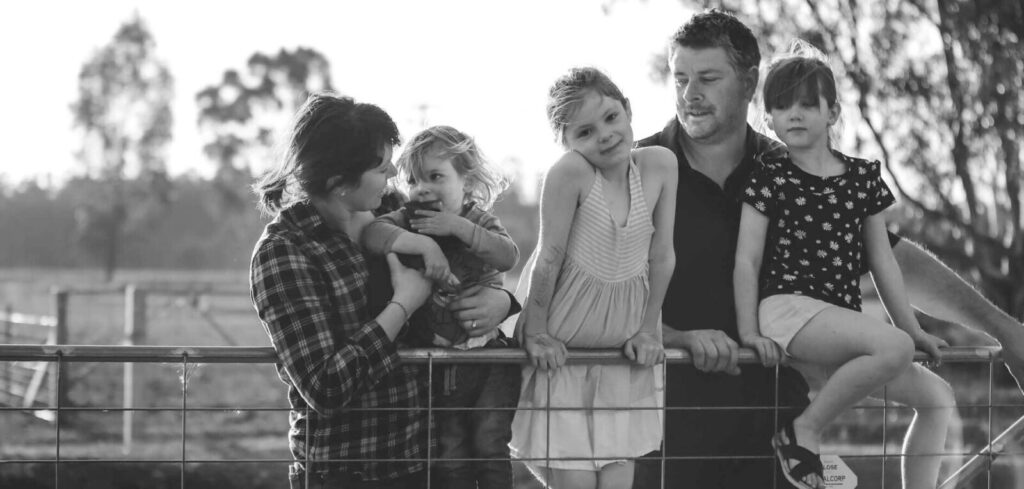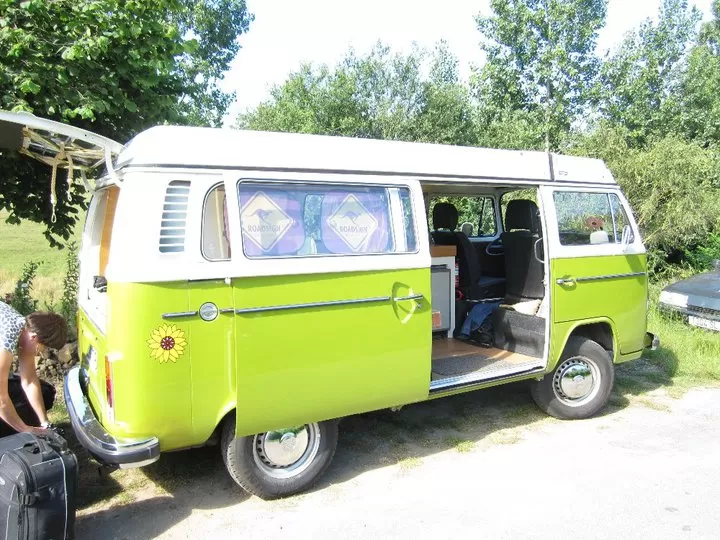
From owning our first ever pet pig Doris, to becoming full-time free range pig farmers, it's been a long, interesting - and, at times, emotional! - journey. This blog looks at how we first started out, and what it truly means to grow animals for meat ethically.
Warning: Contains graphical language and themes that may upset some readers.
About 12 years ago, I (Lauren) was running a little local food store, The Long Paddock Foodstore in Koondrook. With literally no experience in running a retail store or a kitchen, my business partner and childhood friend and I created a monster for our local community. My passion was using local produce and sharing it with our customers, and I loved cooking. It was a steep learning curve in making good coffee, cooking for the masses, sourcing local food, how not to cut my fingers whilst nervously preparing salads, poaching 15 eggs at once, how not to walk out of a kitchen and die when 50 orders were up in front of me... what a lesson in life! I guess this was the start of (as a good friend of mine says), 'bite off as much as you can, then chew like fuck!'. Yes, this pretty much describes my journey up until now.
After a few years in the 'paddock', I fell pregnant and was on the path of setting up a farmers' market in our local region. I'd just been to France with Mum and travelled around on a Royal Agricultural Society Rural Ambassador Award bursary. I wanted to see how French agriculture was entrenched in everyday life, and how local food was the hero so that on return I could be well equipped to set up a farmers' market. What a trip! Three weeks driving around aimlessly from market to market, eating as locally and seasonally as possible, talking with farmers and observing the close relationship people had with their food was fascinating, and a lifetime highlight. And the charcuterie! When we got back I was fuelled up and ready for a new project, leaving the food store to concentrate on motherhood and the farmers' market concept. We already had our first pig, Doris. The local gap in good free range pork was huge, so Doris was the beginning of growing our own meat for ourselves and the store. Surely growing pigs in a paddock couldn't be that hard? We just needed a paddock... surely it's that simple?

We searched high and low for free range Berkshire breeding stock. We took what we could get and travelled all over NSW and VIC chasing Gumtree ads for gilts (young females) and boars (the breeding boys). Some of the farms we visited were good, but mostly, the pigs had been mistreated or had been locked up. I think the girls were pretty happy to come to our place, but they had baggage. I remember crying when we were loading two sows over near Rutherglen, the loading race was shonky and too narrow and the pigs had obviously never been handled before in a race. The owners were using a cattle prod on them and the pigs were obviously in a state of high stress and were screaming. My husband Lach and I were shocked - surely this wasn't how pigs were treated? It took a while but in the end we had a good little herd of 20 sows (breeding mothers). I quickly grew emotionally attached to our animals and saw the value in having pigs roaming freely in paddocks and what that meant for their wellbeing, and mine. There's nothing quite as grounding as seeing pigs grazing in a paddock.
Pig Farming Lesson Number 1: Pigs remember. You have to earn their trust by treating them well, using your calm voice and ensuring that when handling them you have food on hand.

The first hurdle we faced was that we had no land (quite important when starting a free range pig farm!). Lach's parents live one kilometer down the road and suggested that we should try it out first at their place instead of investing in buying our own land. This was solid advice. Neither of us had any idea what we were doing, and Lach was full time running the family trucking business. So we took the generous offer and set up water troughs and some ingenious low cost pig shelters. The first few years were marked by dry, hot summers and wet, cold winters, but the pigs did well despite this and after 12 months we had successfully raised our first litter to finisher size without too much trouble (albeit a lot of swearing, broken fences, pigs out on roads, waterlines getting wrecked and pigs living in the nearby bush for days on end).
The first time we tasted our own homegrown, heritage bred paddock pigs, was the third weekend in September, 2011. It was the night before the first Koondrook-Barham Farmers' Market (that I'd also been working behind the scenes to launch), created with a group of local producers collectively known back then as the Red Gum Food Group. I'd done the first trip to the local abattoir, conveniently located 30 minutes down the road at Gunbower. The pigs were so quiet that I backed the float up to the paddock and put some food in it, and they literally just jumped in. "This is easy as", I thought! Lucy (our 6 month old daughter) was in the child seat, and off we went. I remember the day so clearly. I unloaded the pigs, I'm sure I caught the abattoir workers and the owner, Jack McGillivray, laughing at me, coaxing the pigs off with more food and gentle nudges to the loading ramp to the kill box. I wanted to see how it was done, to ensure that it was done well and that they didn't suffer - these were my babies! The pigs were cautious and stood quietly on the kill floor, taking their surroundings in. The next minute, the boys entered the floor with a huge knife and the stun bolt. They carefully placed the bolt on the forehead of the first pig and then bang, half a second later the pig was down and the knife had entered the pig's chest to release the blood and complete the kill. Repeat on the other pig and the job was done. I was overwhelmed. Shocked and surprised at the suddenness of life that was taken, which was now a carcass being cleaned of hair and gutted. I'd only ever witnessed our steers growing up leave the farm on a truck and return in a coolroom, I'd never been there to witness the deed, but had helped bag up lambs on the kitchen table. I jumped back in the car and bawled my eyes out all the way home. I called my good friend, Troy, who is a butcher, who had more experience with this side of meat production than me. He assured me this was normal, and that killing an animal will never be something that is viewed upon in golden light and rainbows. What was important was that the pigs weren't stressed, and that the process was fast and professional. I was still devastated but was also humbled that I had gone through the process with the pigs who we had raised from birth and had grazed happy until the moment they jumped in the horse float. I had done it. I had grown pigs for meat.
Pig Farming Lesson Number 2: The abattoir is not really a nice place to visit, but a necessary and integral part of growing meat. The process of getting the pigs there calmly and having them dispatched in a humane manner is what's important.
To get our pigs butchered, they were delivered back to the legendary Gunbower Meats, also run by the McGillivray family who owned the abattoir. Tom McGillivray butchered and packed the pigs, with myself and Lucy (in her pram) watching closely. I was fascinated. So many cuts, and the meat looked incredible. The meat was firm and the fat pure white and evenly marbled throughout the dark pink flesh. "We've done a pretty good job raising these pigs", I thought. My next thought was: "Sausages, we must have pork sausages". So we made up a mix of the pork and some rice flour (so they were gluten free) in collagen skins. As it turns out, the sausages were awful, and I was green throughout the entire butchering process.
That night we got home with all the meat and packed it into our Engel car fridge in preparation for the market in the morning, which I co-managed. So much meat! My anticipation levels were at an all time high; the next day we were kicking off the brand new farmer's market, plus selling our meat for the first time...and we'd still not tasted it! So we salted and seasoned up a pork shoulder and slowly cooked it for 4 hours. Mum and Dad were down visiting us to support the market kicking off and the launch of our free range pork brand 'Bundarra Berkshires'. The name originating from the indigenous name of our farm meaning 'place of many Kangaroos'.
So, the pork. We cooked it and set the table. It was momentous. We were all getting ready to tuck in, the moment of truth! The crackle looked sublime, the smell was mouthwatering. Hurry up and sit down everyone! Then Mum piped up with her verdict: "Wow Lauren, this pork is incredible!" In true form, Mum had taken the first bite. With no time to lose, we all tucked in for the first bite of our homegrown meat... The meat was sweet, juicy, and the flavour was nothing like we had tasted before. Is this really pork?! Is this what pork tastes like? I could never remember eating something so delicious, let alone pork. I was used to boring tasting pale and dry meat roasts and just ate it for the joy of sinking my teeth into crackling. This was a revelation. We had done it! With much relief and excitement, I slept very well that night, knowing that we had stumbled across a gem and that our lives were about to change in a huge way.